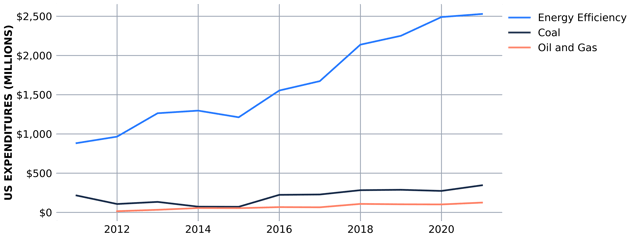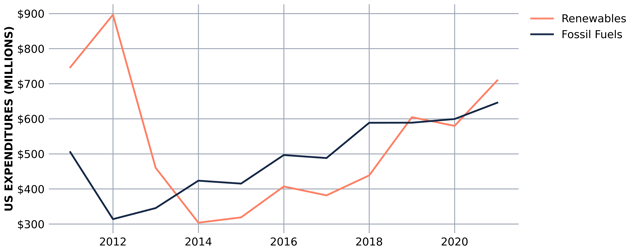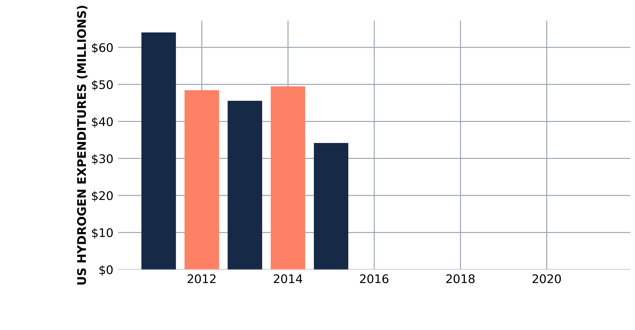Energy Evolution – Rhetoric Versus Reality – Follow the Money
Originally published for customers August 19, 2022
What’s the issue?
If you read only the headlines over the last decade, it would be easy to believe the U.S. government was constantly flip-flopping when it comes to the energy evolution. First, there was the Obama administration with its Clean Power Plan that was going to kill the coal industry. Then the country switched to the Trump administration, which promised to save the U.S. coal industry and withdrew the U.S. from the Paris Climate Agreement. Then, in 2021, President Biden took office, “paused” oil and gas leasing and earlier this week signed the Inflation Reduction Act which is primarily a carbon reduction measure.
Why does it matter?
This flip-flopping between administrations certainly creates uncertainty for those in the private sector trying to make long-term investments in the energy sector. But, interestingly, this flip-flopping does not seem to have much significance on how the federal government itself spends money on energy research.
What’s our view?
The International Energy Agency tracks government expenditures on energy research, development and demonstration projects. That data presents a very different picture. First, the Trump administration doubled the Obama administration’s spending on coal and on oil and gas, but also on energy efficiency. But, the spending in all three of those areas increased during Biden’s first year in office. Finally, the U.S. is most likely lagging other countries on hydrogen, because it has spent essentially nothing on that category since 2015.
If you read only the headlines over the last decade, it would be easy to believe the U.S. government was constantly flip-flopping when it comes to the energy evolution. First, there was the Obama administration with its Clean Power Plan that was going to kill the coal industry. Then the country switched to the Trump administration, which promised to save the U.S. coal industry and withdrew the U.S. from the Paris Climate Agreement. Then, in 2021, President Biden took office, “paused” oil and gas leasing and earlier this week signed the Inflation Reduction Act which, despite its name, is primarily a carbon reduction measure. This flip-flopping between administrations certainly creates uncertainty for those in the private sector trying to make long-term investments in the energy sector. But, interestingly, this flip-flopping does not seem to have much significance on how the federal government itself spends money on energy research.
The International Energy Agency (IEA) tracks government expenditures on energy research, development and demonstration projects. That data presentes a very different picture. First, the Trump administration doubled the Obama administration’s spending on coal and on oil and gas, but also on energy efficiency. But, the spending in all three of those areas increased during Biden’s first year in office. Finally, the U.S. is most likely lagging other countries on hydrogen because it has spent essentially nothing on that category since 2015.
U.S. Administration Changes
Over the last decade, the U.S. has see-sawed between presidential administrations with very different views on climate change. At the beginning of the Obama administration, there was a real emphasis on an “all of the above” solution to climate change, but over President Obama’s term, that changed into one that was perceived by many to mainly focus on renewable forms of energy, to the exclusion of fossil fuels and nuclear. First, in 2015, the administration adopted the Clean Power Plan that was deemed to be a death knell for coal power, and then in September 2016, the administration formally joined the Paris Climate Agreement, under which signatory countries pledge to adopt measures designed to limit global warming to well below 2°C above pre-industrial levels and pursue efforts to limit it to 1.5°C above pre-industrial levels..
The U.S. participation in the Paris Climate Agreement was not long-lived as President Trump announced in 2017 his intention to withdraw from that agreement. But because of limitations in that agreement the withdrawal was not effective until the day after President Trump lost the 2020 election. President Trump had also promised during this campaign to revitalize the coal industry in this country and he enacted a number of regulations that eased pressure on it.
On his first day in office, President Biden signed the necessary papers to rejoin the Paris Agreement, which became effective in February of 2021. He also announced during his first week in office that he would be “pausing” all oil and gas leasing on federal lands. That pause was temporarily blocked by a district court (a decision that was temporarily reversed earlier this week by an appellate court), and as part of the Inflation Reduction Act (IRA), which we discussed in Inflation Reduction Act Takes an All of the Above Approach to Climate Crisis, President Biden agreed to tie oil and gas leasing to renewable energy leasing in a way that many expect will require a continuation of the oil and gas leasing program.
International Energy Agency
The IEA issues a report twice a year that tracks its members’ spending in three areas with respect to technologies that are used to extract, convert, generate, transport, distribute, control, and use energy:
(1) Basic research, which includes work undertaken primarily to acquire new knowledge of the underlying foundation of phenomena and observable facts, without any particular application or use in view.
(2) Applied research, which includes investigations undertaken to acquire new knowledge about a specific practical aim or objective.
(3) Experimental development, which includes using existing knowledge to produce new materials, products or devices, or new processes, systems and services, or substantially improving existing products or services.
At a high level, the U.S. and Japan have regularly spent the most money on this type of research. But when one compares those countries’ expenditures to their total economies, the U.S. quickly falls to the middle of the pack and the leaders as a percentage of gross domestic product are Norway, France, Finland and Japan.
U.S. Expenditures
While the announcements by the last three administrations would lead one to believe that U.S. energy policy has changed dramatically over the last decade, the spending patterns that are detailed in the IEA’s data indicate that changes in administration may not be as significant on spending patterns as one might expect.

As seen above, the U.S. expenditures on coal and on oil and gas certainly increased during the Trump administration, but so did expenditures on basic research on energy efficiency. Interestingly, the expenditures by the Biden administration in its first year were the highest in all three of these categories over the last decade, which may just be an indication of how much more important the overall issue has become.

When we group the expenditures into fossil fuel and pure renewables, i.e., wind, solar and hydro power, the data also shows that the annual expenditures over the last decade are about evenly split between the two and there is no real trend associated with the change in administrations, other than perhaps that the expenditures just kept increasing over time.
In Hydrogen Has No Role in the Path to Net-Zero if Environmental Purists Have Their Way, we wrote about how the role of hydrogen in the energy evolution is very different in the U.S. compared to other developed economies. Perhaps most tellingly in the data is the expenditures reported for hydrogen research.

As seen above, the U.S. has allocated nothing to this form of energy in recent years. In Eight Billion Reasons for a Bit of Bipartisanship, we noted, however, that the infrastructure bill included a huge expenditure designed to spur the creation of four hydrogen hubs around the country. Similarly, as we noted in Inflation Reduction Act Takes an All of the Above Approach to Climate Crisis, the IRA includes a new tax credit for the production of “clean hydrogen.” Whether these actions will be enough to allow the U.S. to catch up with the rest of the developed world remains to be seen.